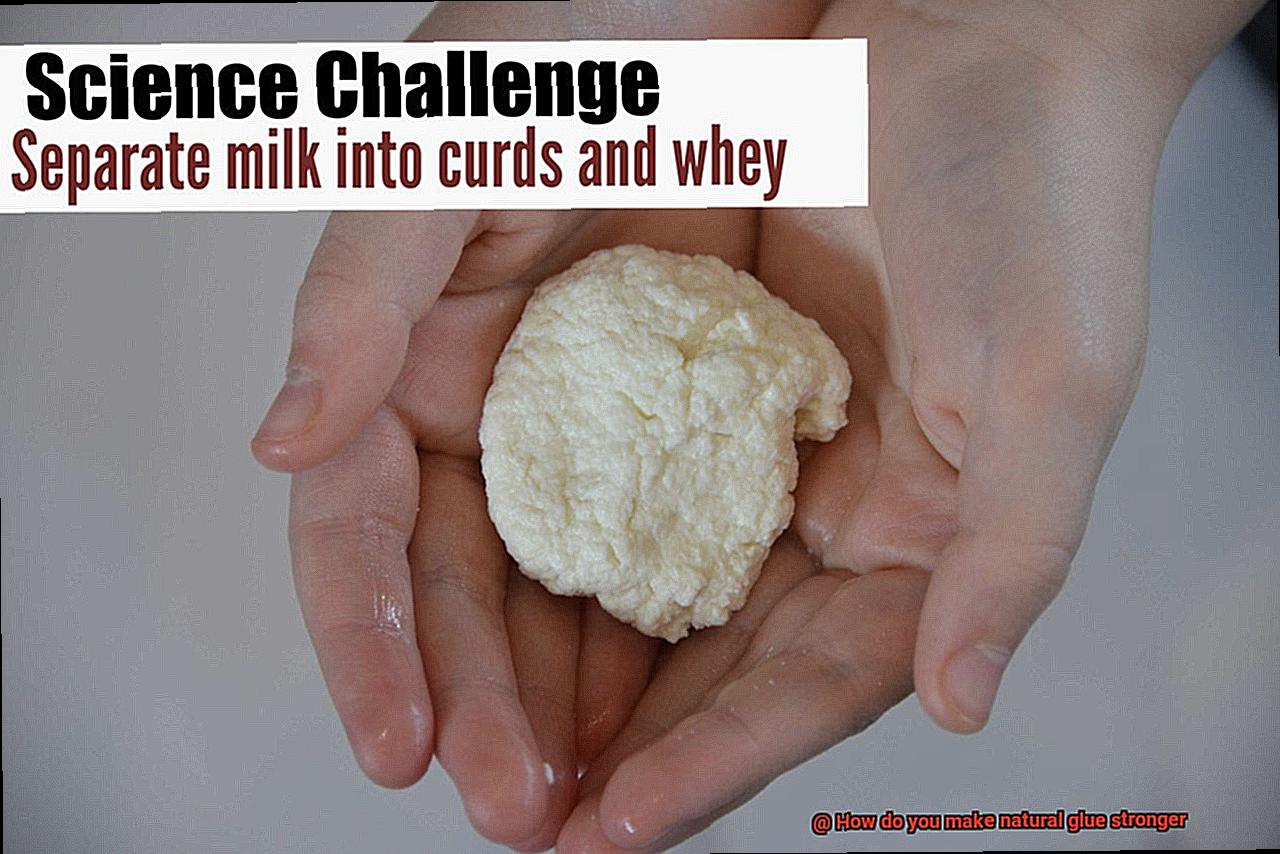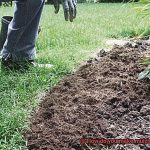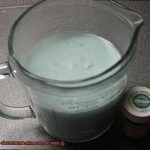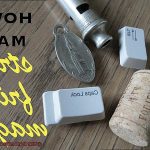Want to create a glue that’s not only eco-friendly but also super strong? Look no further.
In this blog post, we’ll uncover some awesome tips and tricks on how to make natural glue stronger. Whether you’re a hardcore DIYer or just someone searching for a healthier alternative to regular glues, these techniques will take your projects up a notch.
So, grab your apron and let’s dive into the amazing world of natural glues that can truly stand the test of time.
Understanding Natural Glue
Contents
Glue, that mystical substance that holds our world together. But have you ever pondered the wonders of natural glue? In this captivating post, we will delve into the fascinating realm of natural glue and unlock its full potential by enhancing its strength through ingenious techniques and additional substances.
Understanding Natural Glue:
Natural glue, also known as organic glue, has been a trusted adhesive since ancient times. Derived from plant or animal sources, it possesses an array of remarkable qualities that make it non-toxic, biodegradable, and environmentally friendly. However, one minor setback with natural glue is its occasional lack of strength and durability. But fret not. We hold the key to making it mightier.
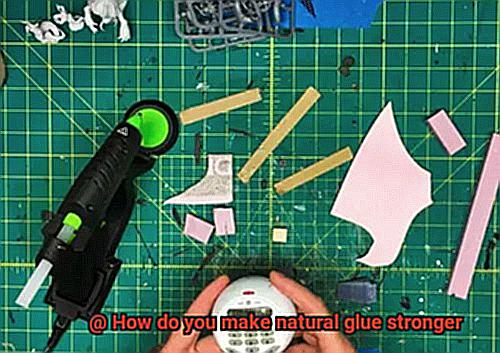
Thickening Agents:
To amplify the adhesive properties of natural glue, introducing thickening agents such as flour or cornstarch to the mixture works like magic. These agents bolster the viscosity of the glue, rendering it stickier and more adhesive.
Binding Agents:
Prepare to be amazed by another remarkable technique – incorporating additional binding agents. Enter gelatin or egg whites, the unsung heroes behind enhancing the bonding properties of natural glue. These proteins act as binders and fortify the overall strength of this adhesive marvel.
The Vinegar Boost:
Prepare to witness the astonishing power of vinegar in strengthening natural glue. A mere addition of a small amount of vinegar to the mixture aids in cross-linking the glue molecules, unleashing its adhesive prowess. Remember moderation is key, as excessive use can weaken the glue’s potency.
Heat Treatment:
Harnessing the might of heat can work wonders in boosting the strength of natural glues. By gently heating the mixture, excess water evaporates while simultaneously thickening the adhesive. This process augments the concentration of solids within the glue, making it robust and durable.
Curing Time:
Patience becomes a virtue when working with natural glue. Allowing ample time for the glue to dry and cure can significantly elevate its strength and bonding capabilities. So, resist the urge to hasten the process and let the glue work its enchantment.
Reinforcement Techniques:
For an added touch of invincibility, consider reinforcing the glued surfaces with additional materials. Applying a layer of fabric or mesh over the glued area provides extra stability and durability, ensuring your creations withstand the test of time.
Thickening Agents for Natural Glue
I’m here to spill the beans on how to supercharge the adhesive properties of natural glue. Yes, you heard it right – there are secret ingredients that can transform your natural glue into a sticky superhero.
Let’s start with the basics. Natural glue, also known as homemade glue or DIY glue, is a fantastic alternative to synthetic adhesives. It’s non-toxic, eco-friendly, and perfect for all your crafting needs. But sometimes, it lacks the strength and durability that commercial glues offer. That’s where thickening agents come into play.
Thickening agents are substances that make liquids thicker. In the case of natural glue, they can improve its binding strength and prevent it from running or dripping. So, without further ado, let’s dive into the world of thickening agents for natural glue.
- First up on our list is cornstarch – a kitchen superhero. This fine powder derived from corn kernels is a go-to thickening agent for many DIY enthusiasts. Mix it with water to create a slurry, gently heat it while stirring to avoid lumps, and watch it work its magic as it thickens your natural glue.
- Next in line is gelatin – not just for desserts anymore. Derived from animal collagen, gelatin has excellent adhesive properties that can enhance the strength of your natural glue. Dissolve it in warm water according to the instructions on the package, add it to your glue mixture, and stir like there’s no tomorrow.
But wait, there’s more. Xanthan gum, a polysaccharide derived from bacteria used as a food additive and thickening agent, can also be your secret weapon. Sprinkle a bit into your natural glue mixture and stir until it thickens to your desired consistency.
And let’s not forget about arrowroot powder, guar gum, and agar-agar – these thickening agents also deserve a spot on your DIY shelf.
Now, before you go slathering your natural glue with all these thickening agents, remember that proportions and mixing techniques are key. Too much thickening agent can turn your glue into a gooey mess, while too little may not have the desired effect. So, experiment with different amounts until you find the perfect balance.
Binding Agents for Enhanced Strength
In this captivating article, we will delve into the fascinating realm of binding agents for enhanced strength in glue.
First on our list is the formidable gelatin. Derived from the very essence of animal collagen, this adhesive powerhouse possesses the ability to transform your natural glue. By infusing the perfect measure of gelatin into your concoction, you can witness a remarkable surge in its strength and reliability. Watch as your glue defies all odds and becomes a force to be reckoned with.
Next up, we have the legendary gum arabic. This ancient resin, extracted from the majestic Acacia trees, possesses an unparalleled versatility as a binder. When added to your glue, it imbues it with adhesive superpowers – imagine your glue donning a magnificent superhero cape. Prepare to be astounded as your once feeble adhesive becomes an unbreakable bond that withstands the test of time.
But hold on, there’s more. Enter the mighty wheat flour paste. Within its unassuming protein-laden fibers lies the potential for greatness. When mixed with water, these proteins act as powerful binders, bestowing your natural glue with an additional layer of fortitude. It’s like adding a secret ingredient that propels your glue to unimaginable heights.
If you’re seeking an explosive boost of proteins, look no further than egg whites. Behold their extraordinary ability to form an indomitable adhesive bond when dried. Your glue will emerge from this transformation stronger than ever before – resilient, unwavering, and ready to tackle any challenge that comes its way. It’s like treating your glue to a protein shake that fuels its invincibility.
And let us not forget the enchanting honey. This delectable treat is more than just a culinary delight; it can also serve as a binding agent in natural glue. The sugars within honey act as invisible threads, weaving through your glue and granting it an extra dose of strength. It’s like infusing your adhesive creation with a touch of sweetness that makes it utterly irresistible.
But wait, the list doesn’t end there. There are still more potential binding agents waiting to be explored. Plant gums like gum tragacanth and gum karaya, with their inherent adhesive qualities, can further contribute to the strength of your natural glue. Additionally, casein, a remarkable protein found in milk, holds the potential to elevate your glue to new heights of resilience.
However, it is important to remember that the effectiveness of these binding agents may vary depending on the specific recipe and application of your natural glue. This journey towards enhanced strength may require some experimentation and tinkering to discover the optimal combination of ingredients that will harness the desired power.
The Role of Vinegar in Strengthening Natural Glue
Today, we embark on a journey into the enchanting world of natural glue, where we uncover a secret ingredient that can transform it into an unstoppable force – vinegar. Yes, you heard it right.
This common household staple holds the key to enhancing the adhesive properties of your glue. So, don your aprons and prepare to be amazed as we delve into the fascinating chemistry behind this magical transformation.
The Power of Acetic Acid:
At the heart of vinegar’s adhesive prowess lies its main component – acetic acid. This remarkable substance possesses adhesive properties that can significantly improve the bonding strength of glue.
When vinegar is added to natural glue, it sets off a remarkable reaction with the proteins and fibers present in the glue, creating stronger bonds and enhancing its overall performance.
The Acidic Alchemy:
Prepare to be captivated by this simple yet mesmerizing process. As vinegar’s acetic acid interacts with the proteins in natural glue, it works its magic by breaking down the protein molecules, allowing them to form cross-links.
These cross-links act as tiny bridges that connect the protein strands, resulting in a stronger and more resilient bond. It’s akin to how vinegar acts as a meat tenderizer by breaking down proteins, making them more tender and delicious.
Preserving the Power:
But wait, there’s more. Vinegar also acts as a natural preservative for your natural glue. Its acidic nature prevents the growth of bacteria or fungi, extending the shelf life of your glue while maintaining its adhesive properties over time. So you can rest assured that your glue will remain potent and ready for action when you need it most.
Moderation is Key:
As with any extraordinary power, using vinegar in moderation is essential. Adding too much vinegar can make your glue thin or watery, affecting its adhesive properties.
To strike the perfect balance, add small amounts of vinegar gradually and test the consistency and strength of your glue before using it for any specific application. Remember, a little vinegar goes a long way.
Varying Vinegars:
Not all vinegars are created equal when it comes to strengthening natural glue. While white vinegar is commonly used and provides excellent results, other types, such as apple cider vinegar or flavored vinegars, may not be as effective due to their additional ingredients. Stick to the classics for optimal results.
Beyond Bonding: Vinegar as a Cleaning Agent:
But wait, there’s even more to vinegar’s repertoire. Its acidic nature also makes it an excellent cleaning agent for removing excess glue or residue from surfaces.
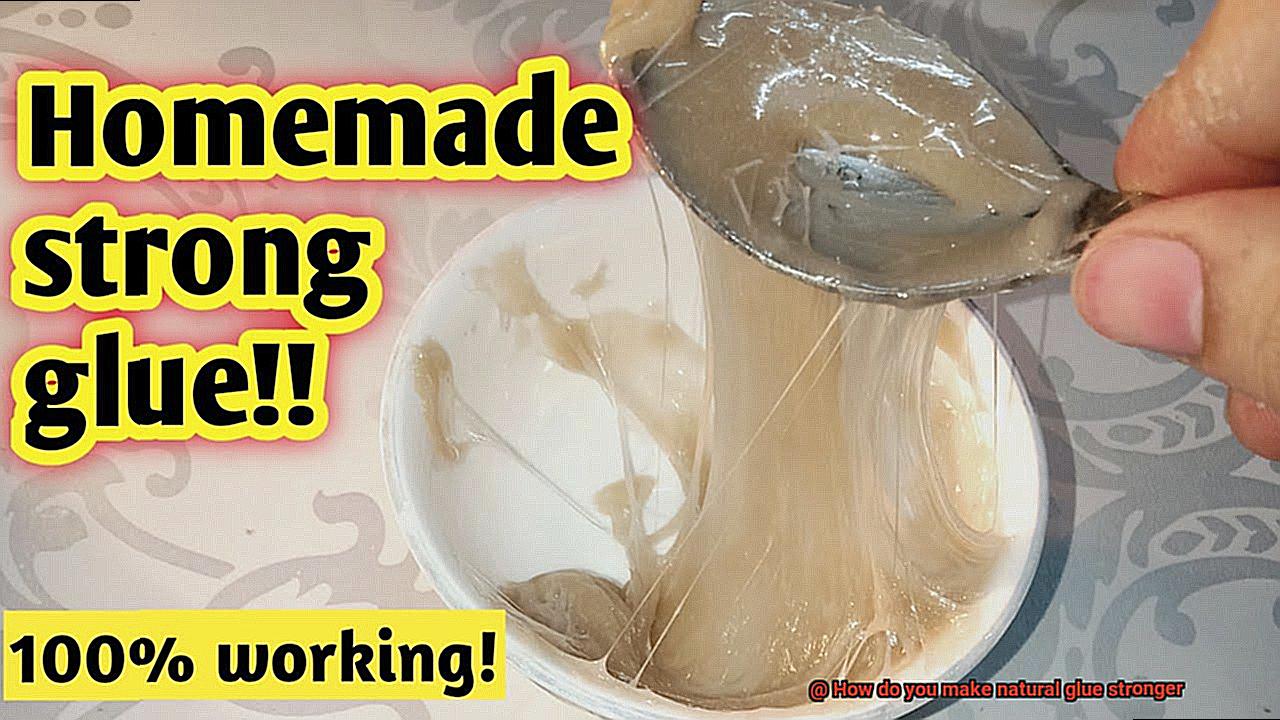
Imagine the ease with which vinegar’s magical powers dissolve and loosen dried glue, making clean-up a breeze.
Heat Treatment for Stronger Natural Glue
Prepare to embark on a journey into the fascinating world of natural glue and discover the extraordinary power of heat treatment. If you have a passion for woodworking or simply enjoy getting creative, this technique is an absolute game-changer that you cannot afford to miss. So, let’s dive right in.
Imagine this: as you apply heat to natural glue, something truly magical occurs. The proteins within the glue undergo a remarkable transformation known as denaturation. Now, don’t be intimidated by the term – it simply means that the protein structure changes, resulting in the formation of stronger bonds within the glue.
Now, let’s explore how you can achieve this incredible heat treatment. There are a couple of methods you can experiment with. Firstly, you can directly apply heat to the glue using a heat gun or carefully controlled flame. Alternatively, immersing the glue in hot water or steam can also yield fantastic results. The temperature and duration of the treatment will vary depending on the specific type of natural glue you are working with.
But wait. Before you unleash scorching temperatures upon your glue, exercise caution. Too much heat can have adverse effects, such as brittleness or a loss of adhesive properties. It’s crucial to strike that delicate balance between heat treatment and avoiding overheating.
Now for the exciting part – not only does heat treatment make your natural glue stronger, but it also enhances its water resistance. This means that your projects can confidently withstand moisture or wet conditions without worry.
Let’s not forget about durability. By fortifying the bonds within the glue, heat treatment ensures that your adhesive can endure wear and tear. Say farewell to frequent repairs and embrace long-lasting projects like never before.
However, fellow glue enthusiasts, it is important to remember that every project is unique. Before diving headfirst into heat treatment, consider the specific requirements of your endeavor. Some natural glues may not be suitable for heat treatment, or they might necessitate specific temperature and time parameters to achieve optimal results.
In conclusion, heat treatment is a revolutionary technique for strengthening natural glue. By subjecting it to carefully controlled heat, you can enhance its adhesive properties, create stronger bonds, and increase durability. Just remember to tread carefully and find that perfect balance.
Curing Time for Improved Adhesion
Today, we embark on a captivating journey into the fascinating world of curing time for improved adhesion in natural glue. Have you ever wondered why your glue-ups didn’t quite live up to your expectations? The answer may lie in the often overlooked aspect of allowing enough time for the glue to fully cure. So, let us dive into the significance of adhering to the recommended curing time and discover how it can unlock the true potential of your natural glue.
Why Does Curing Time Matter?
Curing time is not just a trivial waiting period; it is the key that unlocks the full potential of adhesive strength. Oh yes, my friends, it is during this crucial period that glue transforms from a mere tacky mess into a mighty bond of power.
In the case of natural glues, derived from animal hides or plant materials, longer curing times are often required compared to their synthetic counterparts. Why, you ask? Well, these natural glues contain proteins that demand more time to solidify and form robust bonds.
Optimal Adhesion and Strength:
Picture this: you’ve meticulously prepared your workpieces, applied the perfect amount of natural glue, but failed to heed the instructions regarding curing time.
Your hopes for a strong bond are shattered like glass hitting the cold, hard ground. Rushing the curing process by applying pressure or excessive heat can lead to weaker bond strength.
However, my discerning friends, when you allow the natural glue to cure for the recommended duration, it reaches its full potential in terms of adhesion and overall bond strength.
Tips for Faster Curing:
Now, let us explore some techniques that can hasten the curing process without compromising adhesive strength. Patience is indeed a virtue, but who doesn’t want their projects completed in a timely manner?
- Gentle Heat Application: Ah, the magic of heat. By using a hairdryer or heat gun, you can accelerate the evaporation of moisture in the glue, expediting the curing process. But beware, my friends, for too much heat can damage or alter certain natural glues. Let us exercise caution in our quest for speed.
- Proper Pressure Application: The ancient art of pressure application holds great power. Gently applying pressure using clamps or other ingenious methods ensures proper contact between surfaces and facilitates a stronger bond. Beware, though, for excessive pressure may cause excess glue to ooze out or distort the materials being bonded. Let us find the balance between strength and restraint.
Reinforcing Glued Surfaces
Glue, that seemingly magical substance that holds things together, is often seen as a simple solution for bonding surfaces. However, when it comes to reinforcing glued surfaces, there are several techniques and materials that can take your bond from good to great. Prepare to enter a world of reinforcing techniques that will elevate the strength and stability of your glued surfaces.
In this blog post, we will explore the power of additional layers of glue, the magic of fillers and additives, the strength of reinforcing agents, and the support provided by mechanical fasteners.
Adding Additional Layers of Glue:
Sometimes, the simplest solutions are the most effective. One straightforward way to reinforce a glued surface is by applying additional layers of glue. You can choose to apply a second coat of glue after the initial layer has dried or use a brush to spread a thin layer over the existing bond. These extra layers act as reinforcements, providing more stability and strength to your adhesive joint.
Fillers and Additives:
To give your natural glue an extra boost, consider incorporating fillers or additives. These versatile materials come in various forms such as powders, fibers, or even sand or wood dust.
By mixing these fillers with your glue, you create a thicker adhesive that enhances the overall strength of the bond. The choice of filler depends on your specific application, allowing you to tailor the reinforcement to meet your desired level of strength.
Reinforcing Agents:
Ready to take your natural glue to new heights? Reinforcing agents are here to help. These chemical compounds work in harmony with natural glue, enhancing its adhesive properties and making it more durable and stress-resistant.
Popular reinforcing agents like epoxy or polyurethane can be mixed with natural glue to create a bond that can withstand even the most demanding applications. Together, they form an unstoppable team.
Mechanical Fasteners:
Sometimes, glue alone may not provide the strength you need. Enter mechanical fasteners, the unsung heroes of reinforcement. By combining screws, nails, or other fasteners with glue, you can achieve immediate strength and stability. These fasteners hold the glued surfaces together while the glue cures, creating a bond that becomes stronger over time.
Considerations:
While reinforcing glued surfaces can significantly enhance their strength, it’s important to understand the limitations of natural glue.
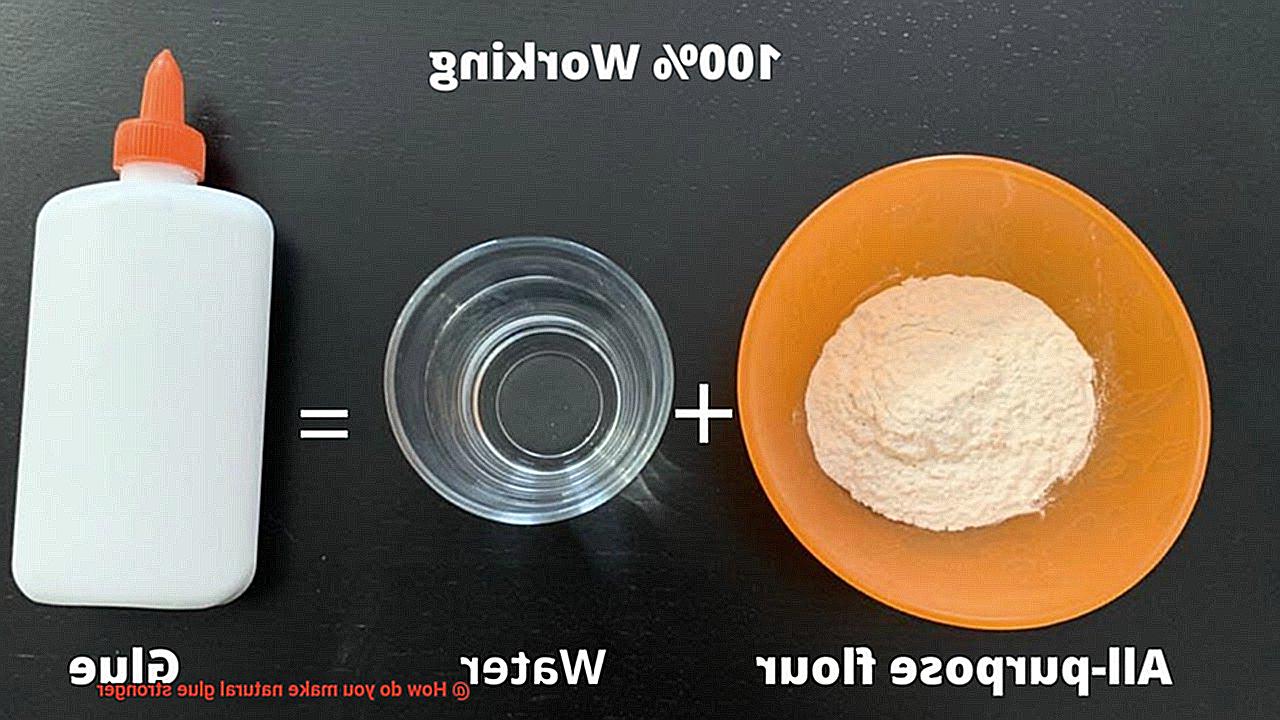
Compared to synthetic adhesives like epoxy or cyanoacrylate glues, natural glue may not possess the same level of strength and load-bearing capabilities. Therefore, it’s crucial to evaluate the requirements of your project and consider alternative adhesives or reinforcement methods if necessary.
Tips for Using Natural Glue Effectively
Natural glue is here to save the day. Although it may not be as strong as commercial options, with a little know-how, you can achieve impressive results. In this blog post, we’ll explore the significance of effectively using natural glue and offer valuable tips to help you create durable bonds.
Choose the Right Type of Natural Glue:
Just like superheroes with different powers, various types of natural glue are available. Options include animal-based glues (like hide glue), plant-based glues (such as wheat paste), or even homemade solutions like milk glue or egg white glue. Consider the materials you’re working with and the specific requirements of your project. Selecting the right type of natural glue is crucial for achieving optimal results.
Prepare the Surfaces Properly:
Every hero needs a clean slate to work their magic, and so does natural glue. Ensure that the surfaces you’re bonding are clean, dry, and free from dirt or grease. Use a mild detergent or rubbing alcohol for cleaning if necessary. For smoother surfaces like glass or metal, gently roughen them with sandpaper to improve adhesion. Remember, a clean surface is the foundation for a strong bond.
Apply an Even Coat:
Now it’s time to suit up your surfaces with natural glue. Use a brush or spatula to apply an even coat of glue on both surfaces for maximum adhesion. Avoid applying too much glue, as excess adhesive can create a messy appearance and weaken the bond. Spread it evenly across the entire surface and let the magic happen.
Allow Sufficient Drying Time:
Patience is a virtue when working with natural glue. Unlike synthetic counterparts, natural glue takes longer to dry. Follow the manufacturer’s instructions for drying time, as it can vary depending on the type of glue used. Refrain from disturbing or applying pressure to the glued surfaces until the glue is fully dry. Remember, good things come to those who wait.
Consider Clamping or Weighting:
Sometimes even superheroes need a little extra help to save the day. Clamps or weights can provide that extra boost for a strong bond. Carefully clamp the glued surfaces together while the adhesive cures. Be cautious not to apply excessive pressure, which may distort materials or squeeze out excess glue. Give your bond some support and watch it become unbreakable.
taBdsSFyJsY” >

